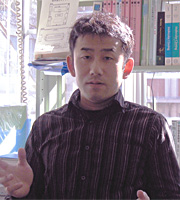Ever since the discovery of penicillin in the early 20th century, we have greatly benefited from natural products produced by microorganisms. Actinomycetes are well known producers of secondary metabolites, as exemplified by antibiotics, and hence are of high pharmacological and industrial interest. From the first reports of streptothricin in 1942 and streptomycin a year later, thousands of naturally occurring antibiotics have been isolated from actinomycetes. Over the past two decades, however, it has become increasingly difficult to obtain new clinically important antibiotics from bacterial sources. In contrast, genome sequencing projects have revealed many biosynthetic gene clusters for the production of unknown secondary metabolites. For example, Streptomyces coelicolor, Streptomyces avermitilis, Streptomyces griseus, and Saccharopolyspora erythraea are known to produce three to five secondary metabolites but actually possess more than 20 clusters that encode known or predicted biosynthetic pathways for secondary metabolites. These findings indicate that actinomycetes harbor the ability to produce many more natural products compared with the ones known currently. The exploitation of such genetic potential in actinomycetes would therefore lead to the isolation of new biologically active secondary metabolites. Our laboratory is therefore trying to develop a method for activating silent or poorly expressed actinomycete genes for synthesizing useful secondary metabolites.
Current results
We recently reported a pragmatic method for activating poorly expressed actinomycete genes for synthesizing a antibiotic by generating a rifampicin-resistant (rif) mutation in the rpoB gene (encoding the RNA polymerase β-subunit) and a streptomycin-resistant (str) mutation in the rpsL gene (encoding the ribosomal protein S12) or both. This led to the discovery of piperidamycin, a novel class of antibiotics from soil-isolated Streptomyces sp. 631689, which normally dose not produce detectable amounts of antibiotics in any type of culture medium. This study shows that modulation of transcriptional and translational apparatus or both (i. e., RNA polymerase and ribosome) effectively activates silent actinomycete genes and can be used to discover numerous new antibiotics.
Profile

Takeshi HOSAKA
- Research Area:
- Applied Microbiology
- Keywords:
- Actinomycetes, secondary metabolism, drug-resistance mutation, silent genes in bacteria, ribosome engineering
- Contact:
- 8304 Minami-Minowa-mura, Kamiina-gun, Nagano-ken
Japan 399-4598
Tel: 81-265-77-1633
E-mail: thosaka[at-mark]shinshu-u.ac.jp
Education and
Employment Experience:
Employment Experience:
1996:
Graduated from Yamanashi University, Japan
2001:
Ph.D. (Bioengineering) Yamanashi University,
Japan
2001-2007(October):
Postdoctoral Fellow, Microbial Function Laboratory,
National Food Research Institute, Japan
2007 (November)-:
Tenure-Track Assistant Professor, Interdisciplinary
Graduate School of Science and Technology, Shinshu University, Japan
AWARDS:
Poster Award, The Society for Actinomycetes Japan (2003)
The Japan Society for Bioscience Biotechnology and Agrochemistry New Project Award (2005)
The Best Student Presentation Award, The Society for Actinomycetes Japan (2009)
Selected Publications:
- Rare earth elements activate the secondary metabolite-biosynthesis gene clusters in Streptomyces coelicolor A3(2). Tanaka, Y., Hosaka, T. and Ochi, K. J Antibiot 63: 477-481 (2010).
- Antibacterial discovery in actinomycetes strains with mutations in RNA polymerase or ribosomal protein S12. Hosaka, T., Ohnishi-Kameyama, M., Muramatsu, H., Murakami, K., Tsurumi, Y., Kodani, S., Yoshida, M., Fujie, A. and Ochi, K. Nat Biotechnol 27: 462-464 (2009).
- Bacterial alarmone, guanosine 5'-diphosphate 3'-diphosphate (ppGpp), predominantly binds the beta' subunit of plastid-encoded plastid RNA polymerase in chloroplasts. Sato, M., Takahashi, K., Ochiai, Y., Hosaka, T., Ochi, K. and Nabeta, K. Chembiochem 10 : 1227-1233 (2009).
- Dramatic activation of antibiotic production in Streptomyces coelicolor by cumulative drug resistance mutations. Wang, G., Hosaka, T. and Ochi, K. Appl Environ Microbiol 74 : 2834-2840 (2008).
- Mutations in rsmG, encoding a 16S rRNA methyltransferase, result in low-level streptomycin resistance and antibiotic overproduction in Streptomyces coelicolor A3(2). Nishimura, K., Hosaka, T., Tokuyama, S., Okamoto, S. and Ochi, K. J Bacteriol 189: 3876-3883 (2007).
- Increased expression of ribosome recycling factor is responsible for the enhanced protein synthesis during the late growth phase in an antibiotic-overproducing Streptomyces coelicolor ribosomal rpsL mutant. Hosaka, T., Xu, J. and Ochi, K. Mol Microbiol 61: 883-897 (2006).
- Improvement of alpha-amylase production by modulation of ribosomal component protein S12 in Bacillus subtilis 168. Kurosawa, K., Hosaka, T., Tamehiro, N., Inaoka, T. and Ochi, K. Appl Environ Microbiol 72: 71-77 (2006).
- The novel mutation K87E in ribosomal protein S12 enhances protein synthesis activity during the late growth phase in Escherichia coli. Hosaka, T., Tamehiro, N., Chumpolkulwong, N., Hori-Takemoto, C., Shirouzu, M., Yokoyama, S. and Ochi, K. Mol Gen Genomics 271 : 317-324 (2004).
- Structural basis for transcription regulation by alarmone ppGpp. Artsimovitch, I., Patlan, V., Sekine, S., Vassylyeva, M. N., Hosaka, T., Ochi, K., Yokoyama, S. and Vassylyev, D.G. Cell 117 : 299-310(2004).
- An aberrant protein synthesis activity is linked with antibiotic overproduction in rpsL mutants of Streptomyces coelicolor A3(2). Okamoto-Hosoya, Y., Hosaka, T. and Ochi, K. Microbiology 149 : 3299-3309 (2003).
- Innovative approach for improvement of an antibiotic-overproducing industrial strain of Streptomyces albus. Tamehiro, N., Hosaka, T., Xu, J., Hu, H., Otake, N., and Ochi, K. Appl Environ Microbiol 69 : 6412-6417 (2003).
- Enhanced expression of S-adenosylmethionine synthetase causes overproduction of actinorhodin in Streptomyces coelicolor A3(2). Okamoto, S., Lezhava, A., Hosaka, T., Okamoto-Hosoya, Y. and Ochi, K. J Bacteriol 185 : 601-609 (2003).